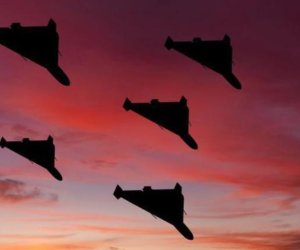Scotland's new mythical beasts to rival Loch Ness legacy

Forget the Loch Ness Monster -- Scotland has a new pair of mythical beasts to lure curious tourists to its shores.Standing proudly 25 miles from Edinburgh, "The Kelpies" are the world's largest equine sculptures, and it is hoped they'll become just as famous as old "Nessie."The name, rooted in Celtic folklore, refers to a supernatural water horse that was said to stalk the rivers and lochs of Scotland.Despite that fertile source of inspiration, sculptor Andy Scott opted to shun the esoteric to stay rooted in reality, creating a piece that performs a dual role -- as a monument to industry and a beacon of regeneration."Rather than go along the line of the mythical sea horses and all that wifty wafty Scottish stuff, I erred much more towards the heritage of workhorses and our industrial and agricultural past," he told CNN."The horses would have drawn the barges along the canals originally, so there was a great relevance with central Scotland and the Falkirk area."They really are quite imposing, it's a flat estuary down there and they really have a presence on the landscape and work very well against the hills."That sense of scale was really important to me and I've been justified in my intent there."Standing 30 meters tall and utilizing six kilometers of steel, "The Kelpies" were seven years and $8 million in the making.They are part of a wider $70 million project to transform 350 hectares of land in the Forth Valley, equidistant between Edinburgh and Glasgow, in the hope that up to 350,000 tourists will visit each year.Billed under a project called "Living Landmarks," the sculptures underline the impact that art on a grand scale can have in transforming an area."I can only hope that is what happens and they do act as a catalyst for a sense of pride and regeneration, to draw people to the area," Scott said."It would be churlish to ignore the impact of 'the Angel of the North' (by Antony Gormley), and one of my personal favorites, Anish Kapoor's 'Cloud Gate in Chicago.'"I've been over there a few times to have a look at how it's been instrumental in regenerating that area of Millennium Park in Chicago. These things can have that effect."So what is it about these great set-pieces that strike such a chord with the public?"Partially, it is the scale -- the sheer monumental nature of them draws people to them," Scott explained."Media awareness, social media, word of mouth spreads the word, it spins out the attraction as it were, gives it that 'must see' status."Already the story of 'The Kelpies' has gone round the world and that really sets them on people's agenda and makes people want to come and see them for themselves."I think another thing these large pieces do is that they change as an artwork and your perception of them from a distance, when you might see them as horses on the landscape but then the closer you get they become much more of an architectural feature."I was determined from the beginning that the public should be allowed inside them, to actually see the engineering and the scale from the inside."They are recognizable objects and that immediately throws out a line of engagement with the audience that perhaps some other abstract pieces don't."I think the figuratively, recognizable nature of the horses seems to be drawing a fair amount of comment."The two sculptures were modeled on actual Clydesdale horses called Barron and Duke, and Scott made two small-scale maquettes standing three meters high.The 18,000 components that made up each Kelpie were then forged in Yorkshire before they were painstakingly assembled on-site over the course of six months.Not only is the scale so striking but the dynamic between the two horses captivates too -- one looking down, the other rearing up."What I wanted to do was create some sense of dramatic tension between the two," Scott said."I mulled over different options of poses but I reckon that dynamic tension creates a bit of a narrative, and the viewers can make up their own stories and engage with them."It would have been arguably much simpler to make a mirror image of each on either side of the canal, but that certainly creates that more dramatic sight line."You always catch a glimpse of the other one from the other side."(CNN)ANN.Az
Similar news
Similar news
Latest news 
More news 



































 Photo
Photo 



 Video
Video 

